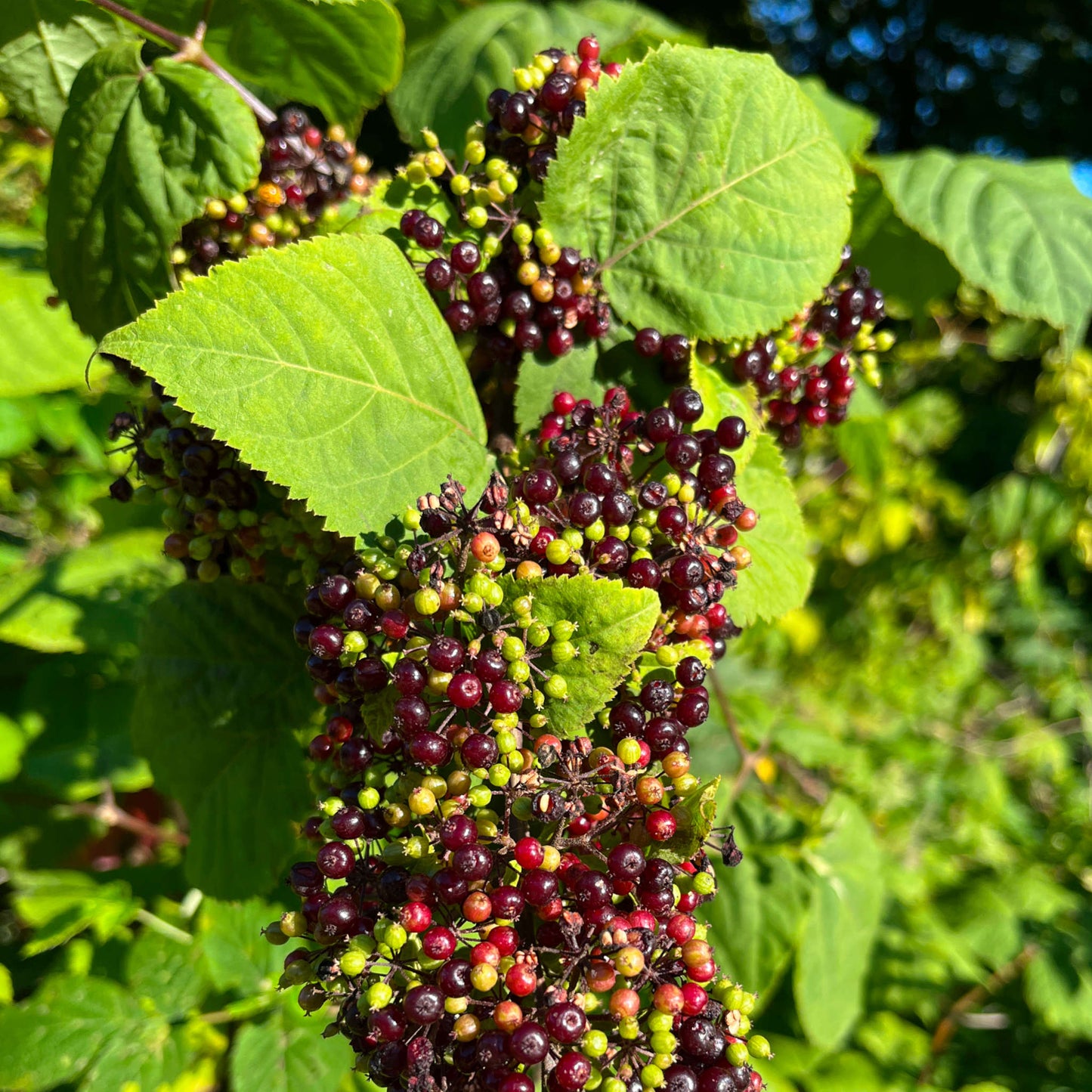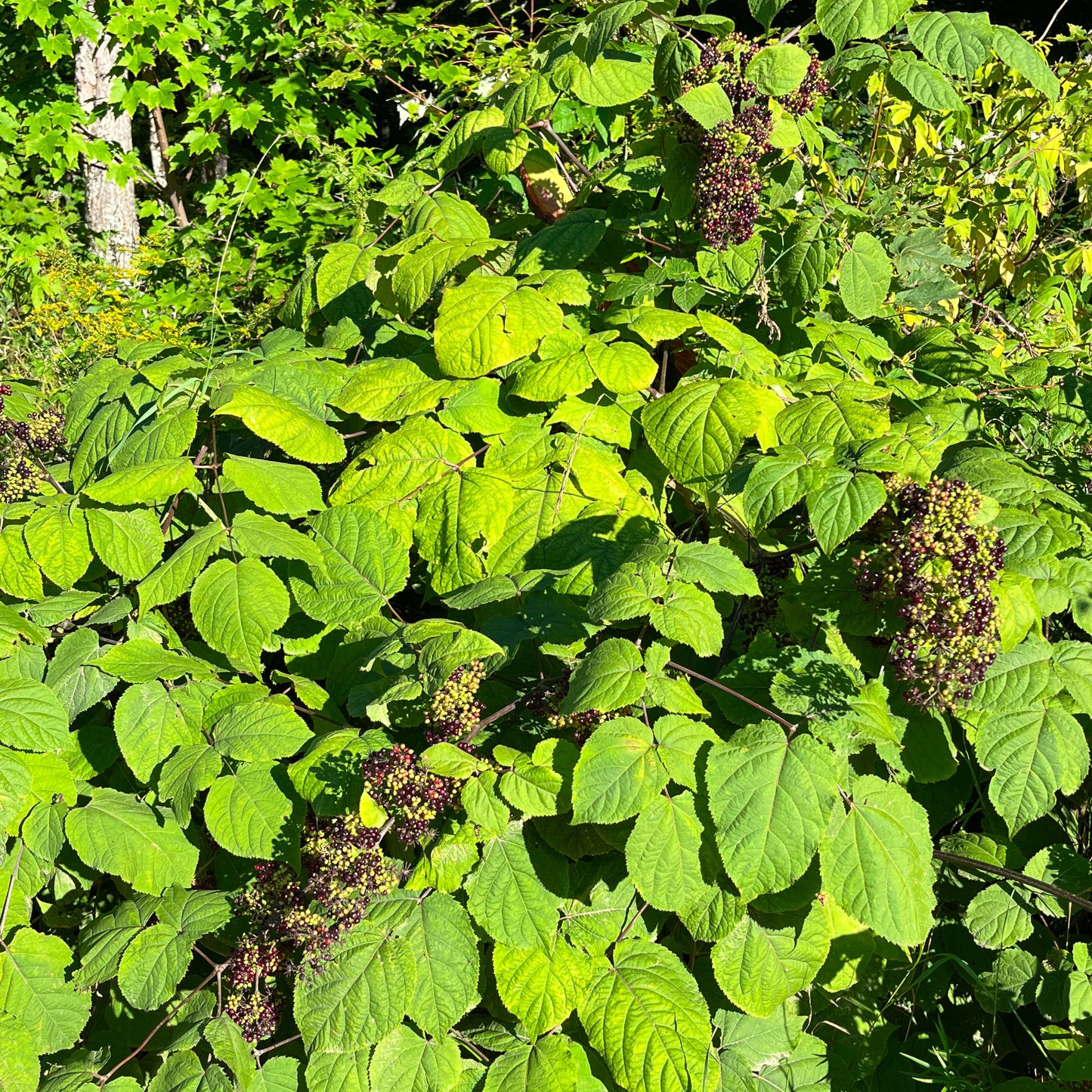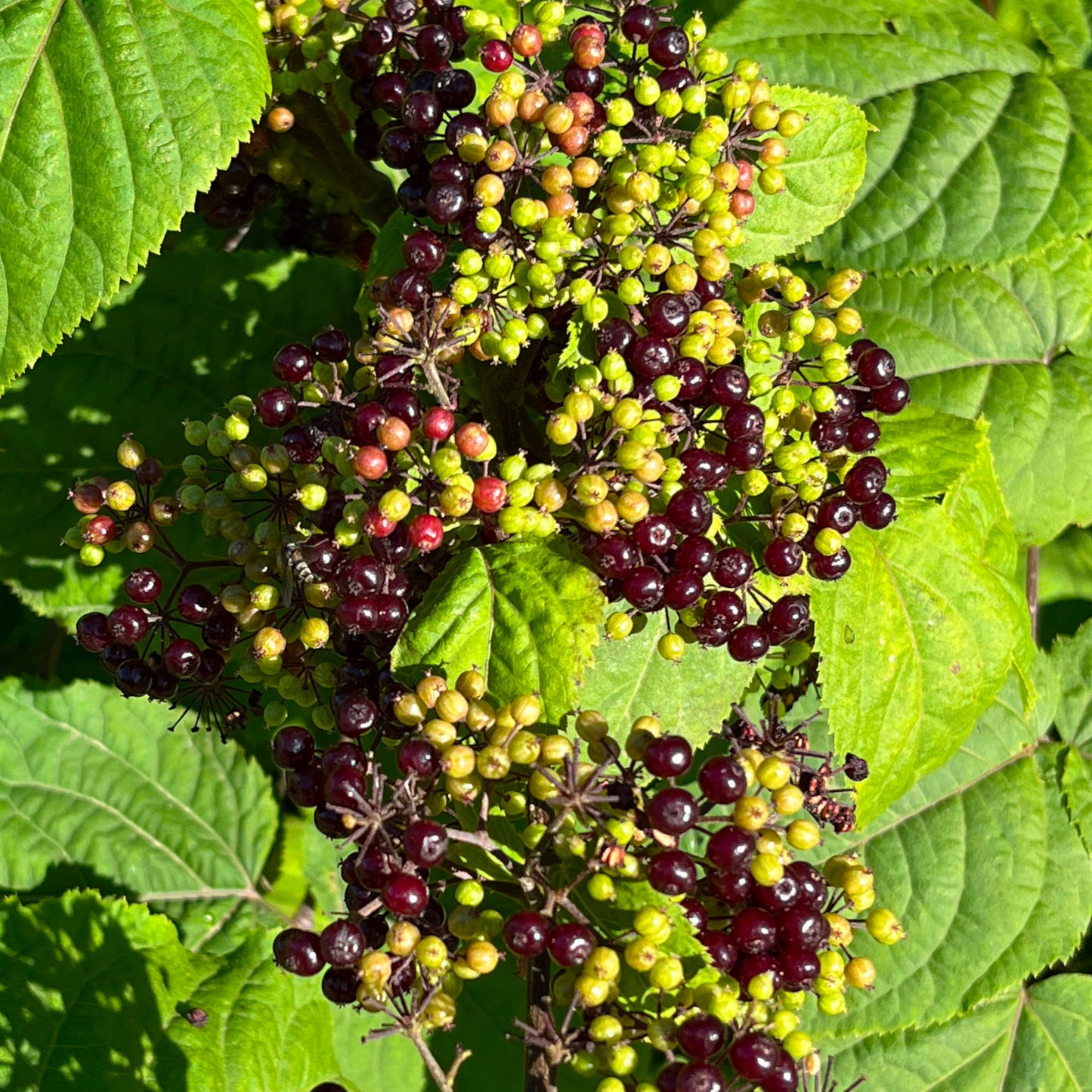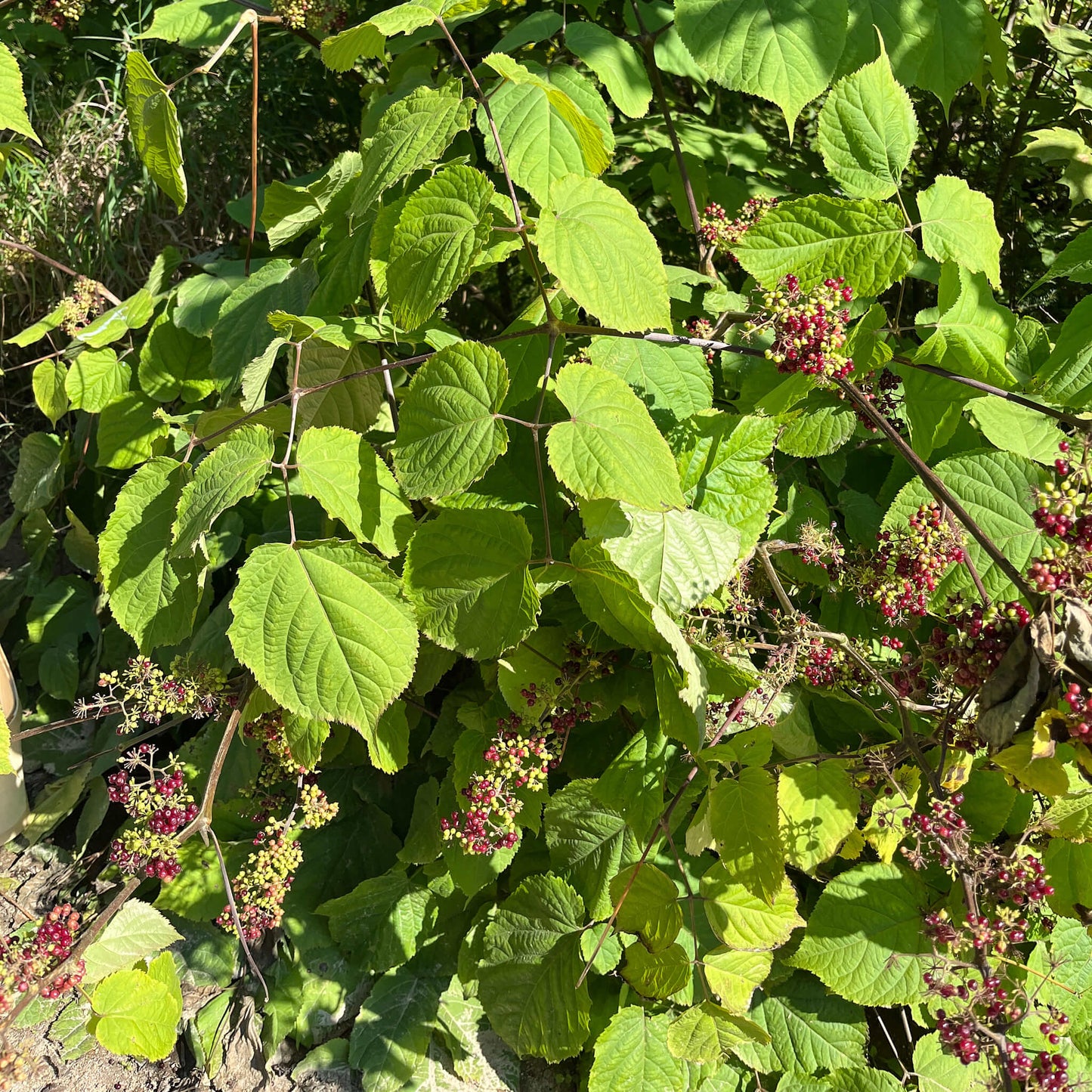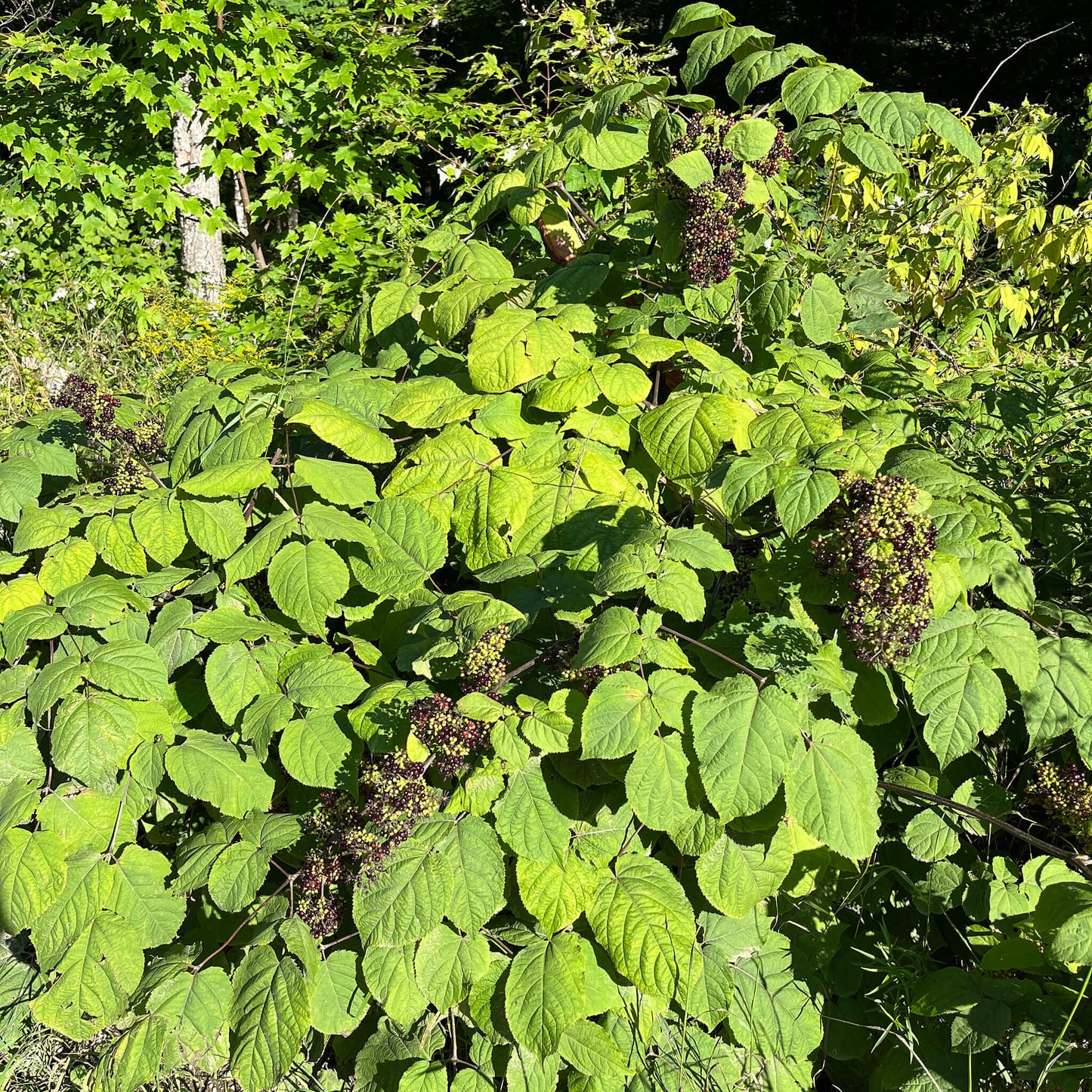For successful seedlings,
see the growing notes at the bottom of the page!
American spikenard (Aralia racemosa) is a perennial shrub native to Quebec, belonging to the Araliaceae family. This imposing and ornamental shrub can reach a height of 1 metre and is distinguished by its large, compound leaves, which can measure up to 60 cm long. Its dark green, finely dissected leaves create a lush backdrop for the inflorescences. In June and July, American spikenard produces numerous small, greenish flowers arranged in umbels, attracting a wide variety of pollinators. By late summer, the flowers give way to clusters of round, fleshy fruits that change from green to dark purple as they ripen, between August and September. These berries are highly favored by birds, adding a splash of colour to the garden while promoting biodiversity.
Medicinal and Culinary Uses
American spikenard has been valued for centuries for its many medicinal properties. Its thick, aromatic root, harvested in the fall, is traditionally used in infusions or decoctions to treat various ailments, including respiratory conditions and muscle pain. In addition to its medicinal properties, spikenard root was once a key ingredient in the making of root beer and was used to flavour spruce beer, offering a distinctly woody and spicy taste. The fruits of American spikenard are also edible, providing a complex flavour with peppery and resinous notes. They can be used to make jams or jellies, often in combination with other berries.
Ecological Role
American spikenard plays an important ecological role in forest ecosystems and natural gardens. Its nectar-rich flowers attract a multitude of pollinators, such as bees and butterflies, contributing to cross-pollination. Its fruits are a food source for birds at the end of summer, aiding their diet during migration. Furthermore, this dense-foliaged shrub provides cover for small animals and insects, creating a favorable habitat for local wildlife. By integrating American spikenard into gardens, one not only promotes biodiversity but also contributes to soil stabilization and the health of surrounding ecosystems.
Spikenard seeds require scarification and cold stratification to ensure germination. See the cultivation notes below for more details.
Akène cannot assume any responsibility for the use of plants for therapeutic purposes. Always seek advice from a professional before using a medicinal or edible plant.
Sowing and Growing
Technical Details
Seeds per packet: 50
Family: Araliaceae
Scientific name: Aralia racemosa
Life cycle: Perennial
Hardiness zone: 3
Soil type: Loamy
Soil moisture level: Slightly humid
Soil - additional attributes: Rich
Light: Part shade, shade
Blooming: June to July
Spacing: 100 cm
Height: 100 cm
Deer resistance: High
Stratification: 60 days
Scarification: Soaking for 24h
Germination time: Variable
Sowing depth: 5 mm


